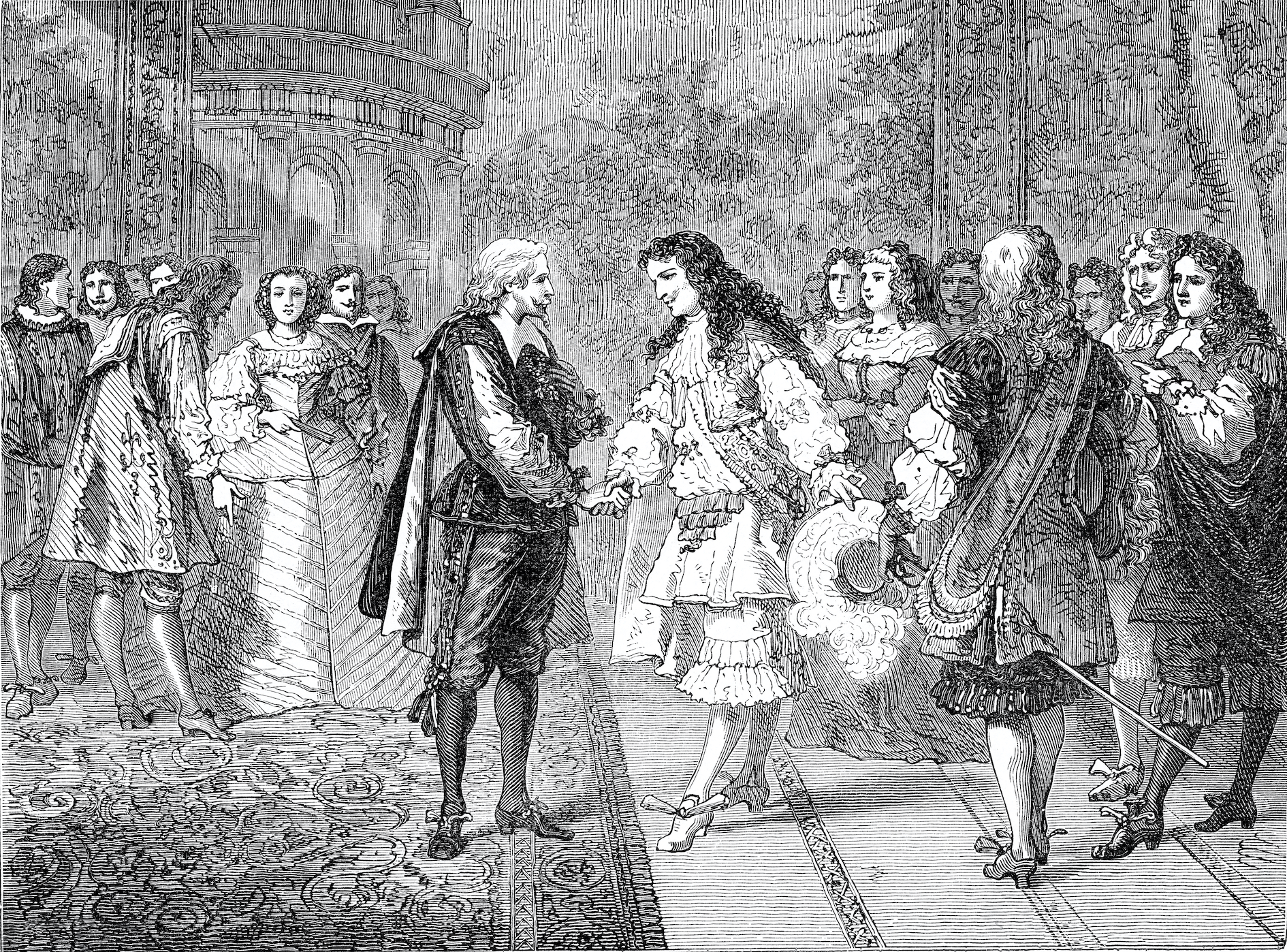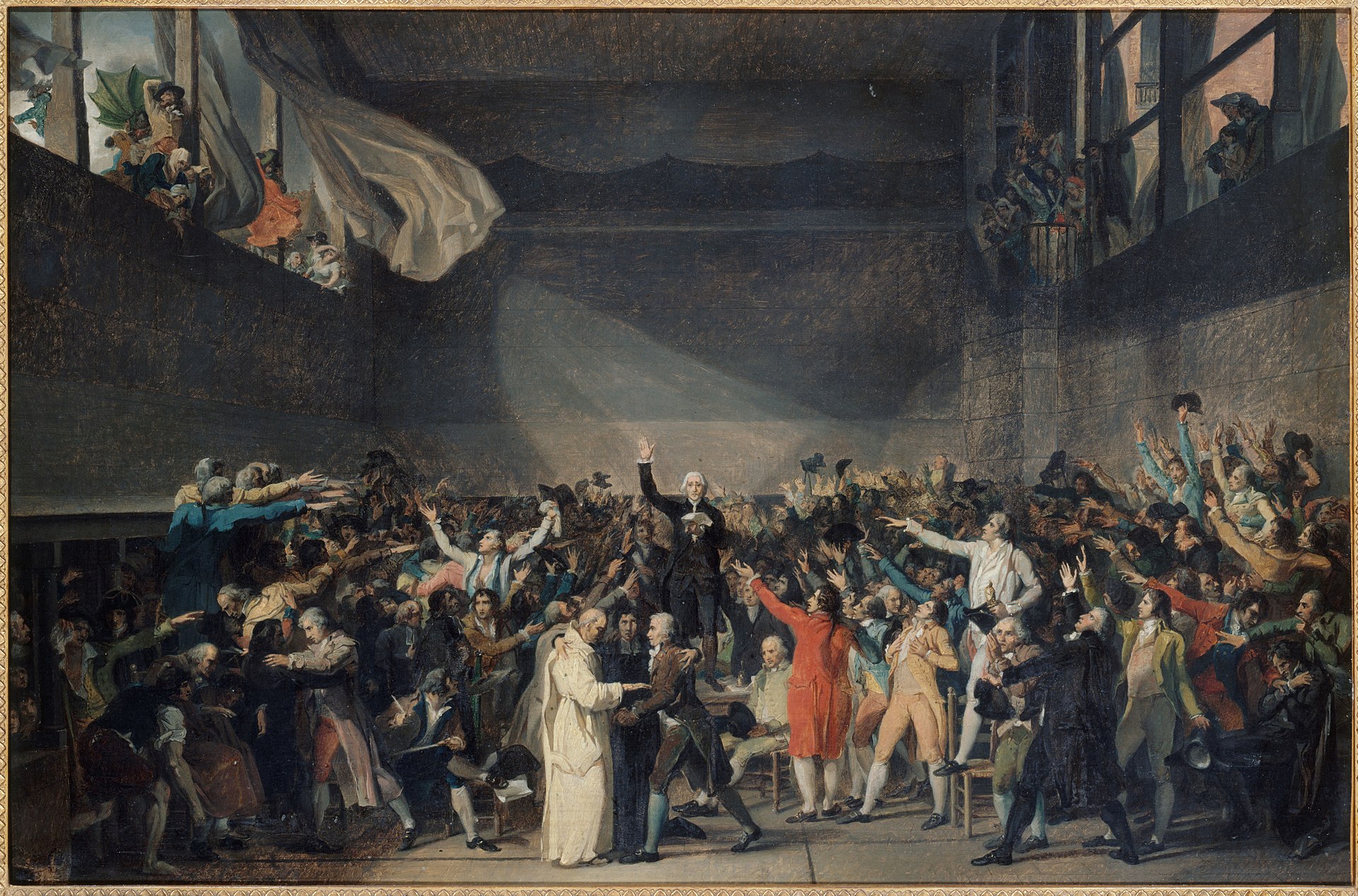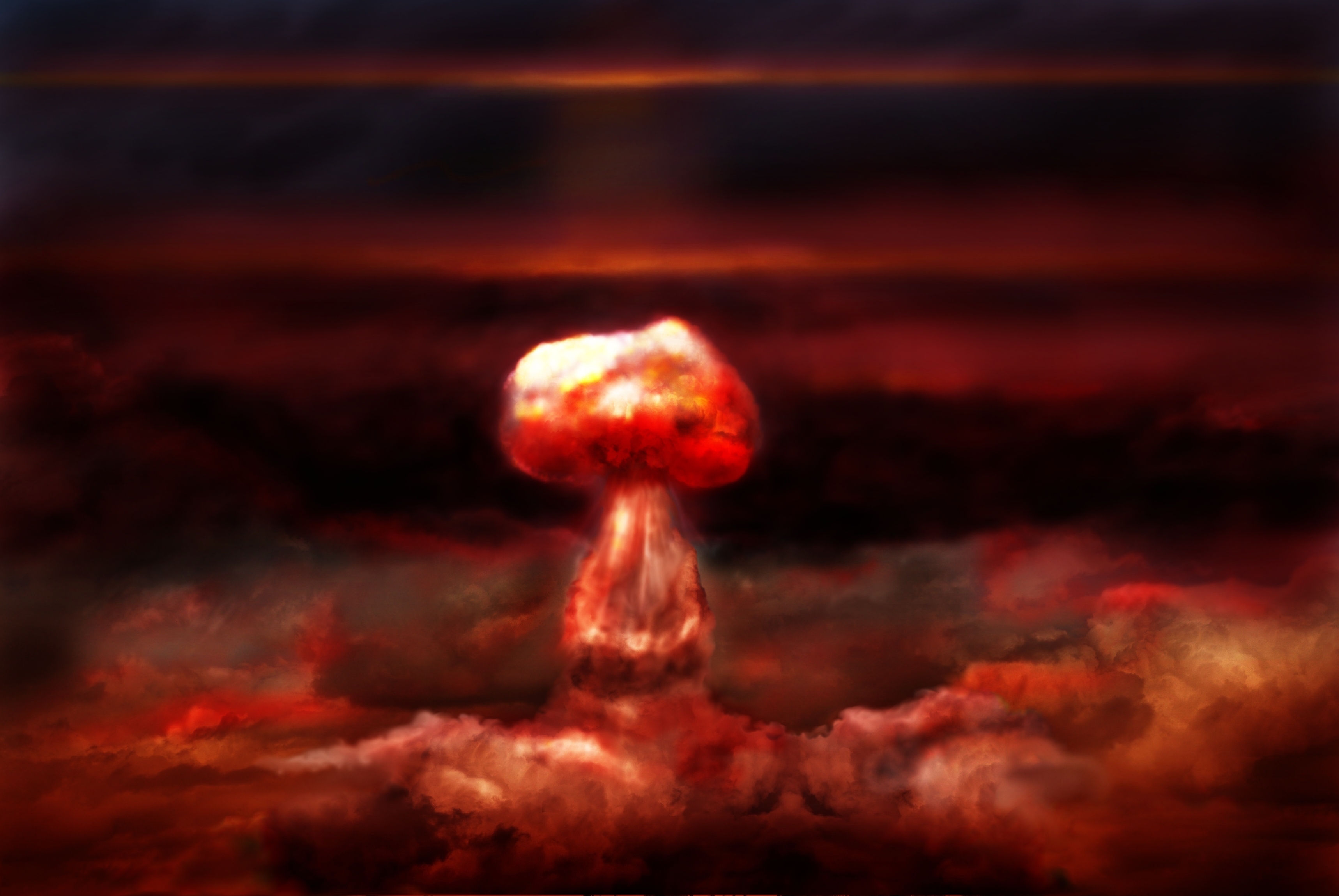One of the leading ideas in the international relations of the 18th century was the idea of the balance of power – that no State would be powerful enough to dominate the entire continent. Perhaps the last monarch who attempted that was Louis XIV in the second half of the 17th century; this was described as his bid for universal monarchy.
When there was no State powerful enough to dominate all the others, the idea of the balance of power was that wars might break out occasionally, but they’d never be especially destructive. Countries would strategically switch sides from one coalition to the other in order to keep the relative power balance on the continent more or less the same. British foreign policy was explicitly organised around this idea of not allowing any superpower to emerge on the European continent.
The system of war
From one point of view, the balance of power is a way of preventing warfare from becoming too destructive. But the Abbé de Saint-Pierre – the man who’s most associated with this idea of perpetual peace – didn’t think that the system of the balance of power was a way of preserving the peace. In fact, he provocatively called it the system of war. And he had a point.
If you look at the 18th century, or what historians sometimes call the long 18th century, there’s a great deal of war fighting. There are the wars that William of Orange gets involved in, quickly followed by the War of the Spanish Succession; there’s the War of the Austrian Succession and the Seven Years’ War; and, later, there are the French Revolutionary Wars and the Napoleonic Wars, which last until 1815.
These are all wars that are spread over several campaigning seasons. There’s obviously something about the structures of European politics that is generating international conflict systematically. The Abbé de Saint-Pierre was one of the early observers who spotted that this was the case. In particular, he worried that these interminable rounds of war were very bad for the sovereignty of the small States of Europe.
Sovereignty of small States
There were hundreds and hundreds of separate, State-like territorial units on the map of Europe in 1500. On the eve of the First World War in 1914, there were only a handful. There’s this 400-year process whereby small States are losing their independence, failing and being grouped together into larger units.
Much of this process had already been completed in the 18th century, but Saint-Pierre was invested in a world in which small States – such as the smaller States of Germany; the cantons in Switzerland; the republics of northern Italy, like Venice; the Republic of Geneva, between France and the rest of Switzerland – might have a future. But they wouldn’t have a future in the system of war, if Britain and France were continually at war with each other in coalitions or alliances with other European powers.
Saint-Pierre is the major theorist of perpetual peace, the major advocate of a European union in the 18th century. He imagined that this union would have its headquarters at Utrecht. Saint-Pierre’s vision of European union was aimed to be a way of preserving peace and preserving the independence, autonomy and sovereignty of the small powers of Europe. It was meant to give them a guaranteed protection that they wouldn’t get within the prevailing State system in the Europe of his time.
When Jean-Jacques Rousseau left Paris in the middle of the 1750s, he took with him a lot of the Abbé de Saint-Pierre’s materials because his project was to produce an edited edition of Saint-Pierre’s works. In the end, he never did; he wasn’t well suited to this kind of patient, editorial, scholarly labour. So, he wrote Julie and Emile and The Social Contract instead.
However, we do have some shorter pieces of writing that emerged from Rousseau’s engagement with the Abbé de Saint-Pierre. One essay, which he published in 1761, offers a summary of Saint-Pierre’s scheme. In another, even shorter, essay, which Rousseau never published himself and which only appeared after he died, he offers a critique of the Abbé de Saint-Pierre’s scheme. That’s important; the fact that the more critical text wasn’t published until after Rousseau died led many people to think that he was a disciple of the Abbé de Saint-Pierre, whereas his relationship to the plan for perpetual peace was much more critical.
Rousseau shared some of the views of the advocates of perpetual peace. He didn’t think that a universal monarch, a single superpower, could emerge in Europe in modern conditions and pacify the continent. But Rousseau also didn’t think that commercial activity was likely to bring peace.
Commerce, kings and peace
In the 18th century, the slogan doux commerce emerges, meaning sweet or gentle commerce. It’s the idea that commercial life will replace war with commerce; markets will help to drive out conflict. According to Rousseau, commerce can’t generate peace because everything depends on the economic models that finance ministers have in their heads, which are all extremely bizarre. Whenever a minister gets funny, new ideas about the economy, that can generate a great deal of international conflict very quickly.
So, Rousseau is sceptical that the rise of market society will lead to peace in Europe. That leads him to take an interest in the Abbé de Saint-Pierre’s proposal for a European union although he thinks that kings – and most of the rulers in Europe in this period were kings – have a passion to dominate.
The Abbé de Saint-Pierre thought that kings would jump at the chance to create an international order of peace and plenty, because what could be more glorious than to set up a regime of everlasting peace? But Rousseau, and later, Immanuel Kant, thought that kings liked going to war. Kings were playing toy soldiers, but with real armies. Rousseau says pointedly that kings would much rather rule over a large and miserable population than over a small and happy one. He thought that the vanity of kings and their warmongering activities were a practical block to the emergence of the international confederation that the Abbé de Saint-Pierre had envisaged.
The French Revolution
Rousseau becomes interested in the Abbé de Saint-Pierre in the 1750s, and he publishes in 1761, so he’s working against the backdrop of the Seven Years’ War. Kant’s famous essay Perpetual Peace is written in the middle of the 1790s, the era of the French Revolution. The French Revolution gives rise to an intensified argument about European organisation and how that might be changed in the future.
Among the French revolutionaries themselves, you have key figures like Anacharsis Cloots, a Prussian aristocrat. He thinks the French Revolution is the start of a process that will lead to a universal republic, which he thinks is quite different from Saint-Pierre’s scheme. In his view, Saint-Pierre’s scheme is a league of kings, whereas the universal republic will be founded on the rights of each individual.
Many people think that that’s a crazy delusion and are imagining other ways of reorganising Europe. Will the French Republic build a series of buffer States around the Low Countries, in the Rhineland and in Switzerland as a bulwark against the monarchical powers in Europe? Or will the revolution be exported? And will Jacobins across Europe overthrow their own monarchies and set up sister republics alongside the French? There’s a lot of speculation about what the future of Europe might look like.
Kant and perpetual peace
This is what’s going on in the world in which Kant writes his essay. There’s this renewed interest in recasting the contours of European politics. Kant’s interesting because he uses the language of perpetual peace, but he begins with a joke about how perpetual peace is a suitable name for a pub that has as its insignia a graveyard. That’s to say, maybe perpetual peace is an illusion; the only perpetual peace is the eternal rest of the grave.
In Perpetual Peace, Kant sets out his roadmap of how to get to perpetual peace. First, there are the preliminary articles – how States have to reform their behaviour. If they reform their behaviour in certain ways, that sets up the conditions for a treaty that will bring about an international confederation for a world of perpetual peace.
But the conditions Kant sets out are pretty strenuous. It’s difficult to imagine States giving up the power to borrow money in order to wage war or secret diplomacy or other things that Kant thinks are an obstacle to peace. On the one hand, he’s keeping the Abbé de Saint-Pierre’s vision of perpetual peace alive; on the other hand, he’s explaining just how difficult he thinks it will be, and just how thoroughgoing the transformation of monarchical Europe into a constitutional legal republican representative order would have to be in order for it to become a reality.
One of the fascinating aspects about Kant’s argument can be seen in the founding of the United Nations. If you think that the creation of the United Nations at the close of the Second World War is a framework for an international pacific order, then it is interesting that this international organisation that is trying to deliver perpetual peace emerges in the wake of the destruction of fascist tyranny. Kant believed that you need to have representation, parliaments and elections to lay the foundation for perpetual peace.
Another interesting Kantian moment is that if you read Perpetual Peace alongside his essay Idea for a Universal History with a Cosmopolitan Purpose, he floats the idea that it’s only when human beings possess the technology to destroy themselves that they will ever be motivated to come together to abolish war. Again, it’s a very tantalising thought that the founding of the United Nations and the military use of the atomic bomb at Hiroshima and Nagasaki belong to the same historic moment in 1945. One can ask whether Kant was on to something by linking the most destructive military technologies to the question of the possibility of a pacific international order.


